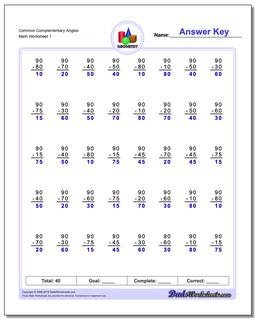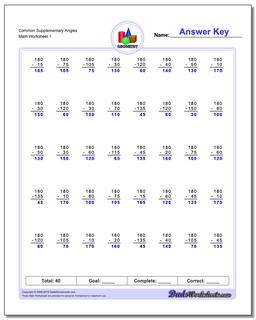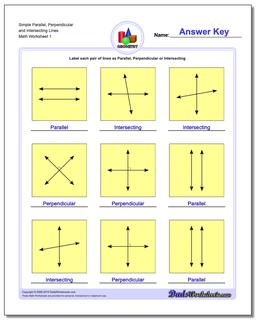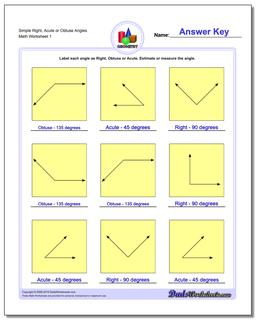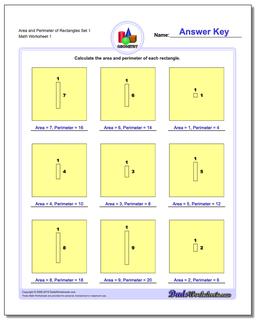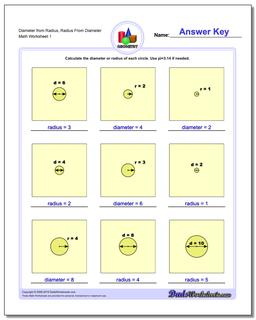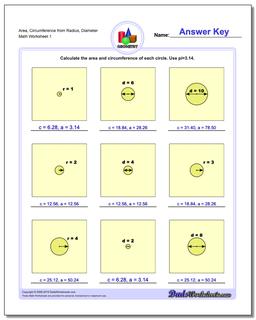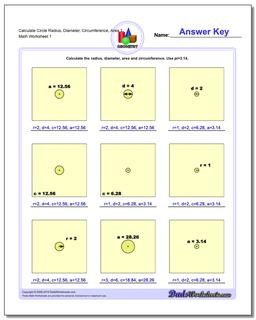Core Math Worksheets
Fraction Worksheets
Word Problems
Algebra and Trigonometry
Other Worksheets
Place Value
Percentages
Rounding Numbers
Ordering Numbers
Standard, Expanded, Word Form
Mean Median Mode Range
Ratio Worksheets
Probability Worksheets
Roman Numerals
Factorization, GCD, LCM
Prime and Composite Numbers
Pre-Algebra
Geometry Worksheets
Blank Clocks
Telling Analog Time
Analog Elapsed Time
Greater Than and Less Than
Money
Arithmetic Sequences
Geometric Sequences
Venn Diagram
Graph Worksheets
Measurement & Conversions
Patterns and Puzzles
Color by Number
Holiday & Seasonal
Early Learning
Printables
Calculators
Geometry Worksheets
The geometry worksheets on this page cover topics introductory topics introduced in 5th grade as part of typical math curricula including identifying shapes, math for angles and other assignments. More advanced topics including area, perimeter and volume introduce problem solving skills appropriate for 9th and 10th grade geometry practice, or practice for visual problems on standardized tests. All worksheets include answers keys, and many topics include geometry reference charts for concept help.
Shapes and Solids Worksheets
52 Shapes and Solids Worksheets
This page has dozens of printable shapes worksheets for identifying and naming 2D and 3D shapes. Activities for kindergarten and preschool age students include identifying counts of faces, edges and vertices. Students also learn to identify the shapes of real world objects, and practice worksheets include shape spelling and shape crossword puzzles.
Shapes WorksheetsTransformation Worksheets
32 Transformation Worksheets
These transformation math worksheets practice rotation, reflection and translation transformations of geometric shapes on a coordinate plane. These worksheets are perfect practice exercises for 5th, 6th and 7th grade geometry students.
Transformation WorksheetsPythagorean Theorem
28 Pythagorean Theorem Worksheets
These Pythagorean Theorem worksheets require students to find the different sides of triangles using Pythagoras's theory establishing a relationship between the triangles proportions. Pythagorean Theorem Modeling V2
Pythagorean Theorem WorksheetsArea And Perimeter
20 Area And Perimeter Geometry Worksheets
The area and perimeter worksheets on this page start with requiring students to calculate area and perimeter of basic shapes such as triangles, squares, circles and ellipses. Additional worksheets with compound shapes require students to calculate missing dimensions and use problem solving skills and strategies to calculate area and perimeter.
Area And Perimeter WorksheetsAngles of Triangles
20 Angles in Triangles Worksheets
Angles of triangles worksheets, including finding missing angles by summing the interior angles, exterior angles of triangles and angle bisectors. Angles Of Triangles Missing Exterior Angle V1
Angles in Triangles WorksheetsCenters of Triangles
24 Centers of Triangles Worksheets
Center of triangle worksheets for practice finding the centroid of a triangle, orthocenter of a triangle, and circumcenter of triangles. Also includes concept and vocabulary worksheets.
Triangle Center WorksheetsVolume and Surface Area
32 Volume and Surface Area Geometry Worksheets
The volume and surface area worksheets on this page start with requiring students to calculate area and perimeter of basic solids such as cubes, prisms, cones and spheres. Additional worksheets with compound shapes require students to calculate missing dimensions and use problem solving skills and strategies to calculate volume and surface area.
Volume and Surface Area WorksheetsMeasuring Angles with Protractors
40 Protractor Worksheets
Measuring angles with a protractor worksheets, including blank printable protractor PDFs and detailed instructions on how to use a protractor to measure different types of angles.
Protractor WorksheetsComplementary Angle Geometry Worksheets
12 Basic Geometry Worksheets
Geometry worksheets with subtraction problems for finding complementary angles (Angles whose sum is 90 degrees).
Complementary Angle Geometry WorksheetsSupplementary Angle Geometry Worksheets
12 Basic Geometry Worksheets
Geometry worksheets with subtraction roblems for finding supplementary angles (Angles whose sum is 180 degrees).
Supplementary Angle Geometry WorksheetsParallel, Perpendicular, Intersecting
20 Basic Geometry Worksheets
Labelling lines as parallel, perpendicular or intersecting. Includes line shapes that imply intersection.
Parallel, Perpendicular, IntersectingIdentifying Angles Geometry Worksheets
24 Basic Geometry Worksheets
Label angles as right, obtuse or acute. Optionally estimate or use a protractor to measure the actual angles.
Identifying Angles Geometry WorksheetsIdentifying Shapes Geometry Worksheets
24 Basic Geometry Worksheets
These geometry worksheets require students to identify and name basic quadrilaterals, triangles and polygons.
Identifying Shapes Geometry WorksheetsArea and Perimeter of Rectangles
12 Basic Geometry Worksheets
The problems on these geometry worksheets require students to calculate the area and perimeter of rectangles given their dimensions. The worksheets also work great for multiplication practice!
Area and Perimeter of RectanglesCircles - Diameter and Radius
16 Basic Geometry Worksheets
Worksheets to calculate radius from diameter, diameter from radius, or radius and diameter from area or circumference.
Circles - Diameter and RadiusCircles - Area and Circumference
16 Basic Geometry Worksheets
Geometry worksheets with problems calculating a circle's area and circumference.
Circles - Area and CircumferenceCircles - Relationhips
8 Basic Geometry Worksheets
Calculate the radius, diameter, area and circumference given one circle fact.
Circles - RelationhipsGeometry Worksheets
The basic geometry worksheets in this section cover a number of basic areas of knowledge in this deep section of mathematics. Geometry is one of the first topics where basic arithmetic is applied to more advanced mathematical concepts. The concepts of angular measurement, complementary and suplementary angles, measurement of angles within triangles, the calculator of area of shapes (including circles) are all a promising playground for applying the math skills learned at early stops on a students mathematical journey
Angles Geometry Worksheets Topics
The geometry worksheets in this section start out with applying basic addition and subtraction skills to determine supplementary and complementary angles. Additional worksheets here also deal with idenfifying parallel or intersecting lines, and identification of right angles. While these worksheets a suitable for estimating common angle dimensions, some of these worksheets can also be used as practice for measuring angles with a protractor (the correct angle measurement is given in the answer key for each geometry worksheet).
Shapes Geometry Worksheets Topics
One area of knowledge in geometry is simple identification of shapes, and learning the names for shapes with a certain number of sides is a rote activity. For quadrilaterals, being able to differentiate between a parallelogram (including the special case of the square), rhombus and a trapezoid are important skills. For triangles, there are geometry worksheets that help memorize the types of triangles (equilateral, right, isosceles, as well as acute versus obtuse.) .Additional worksheets in this section deal with finding the perimeter and area of rectangles.
Circle Geometry Worksheets Topics
Circles are a unique species of geometric shape, and the geometry worksheets in this section introduce the basic equations for calculating area and circumference of a circle. Problems that explore the relationships between the diameter and the radius are also provided, giving plenty of opportunity to explore the relationships between these values and pi and the area and circumference of a circle.











